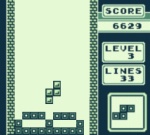Prototyping PCBs with XMOS chips
-
f_petrini

- Active Member
- Posts: 43
- Joined: Fri Dec 11, 2009 8:20 am
Yes, a reflow oven would be very nice to have. I've thought about getting a pizza oven and build a simple controller for it but so far I'm only making smaller boards in very small amounts so the time saved on a oven vs. hot-air is not worth it. Yet... ;)
-
Bianco

- XCore Expert
- Posts: 754
- Joined: Thu Dec 10, 2009 6:56 pm
I took the freedom to check other directories.f_petrini wrote:I use a magnifier lamp like in the picture below. (That's my soldering/lab bench. :) )
It works well for soldering and placing components. I use a simple loupe for closer inspections.
http://www.glintsoft.com/fp/el/sn/ very impressive! what kind of things will it sense?
Any plans for publishing the Altium Designer library symbols for the XMOS device?
Edit: I see you have made a project on Xcore about the board.
-
AkkiSan

- Member
- Posts: 13
- Joined: Thu Feb 04, 2010 12:45 am
Oh yes, a nice little toy ;-)f_petrini wrote:Yes, a reflow oven would be very nice to have. I've thought about getting a pizza oven and build a simple controller for it but so far I'm only making smaller boards in very small amounts so the time saved on a oven vs. hot-air is not worth it. Yet... ;)
Although I have access to a BGA rework station, which of course can solder high-density
standard flat packs too, I built my hobby "reflizza" oven (the Reflow-Pizza ;-) a few month ago.
But I only used it 2-3 times for soldering a BGA.
The major problem for all other stuff, <=0.5mm pitch, is placing the part onto the
solder paste without creating short-circuits.
Another problem is the bad smell...
The first "calibration tests" were performed in our kitchen.
Just imagine that all the smoke and fume from a 2-3 manual soldering orgy
releases within 2-3 minutes... My wife was not amused ;)
I still think the good old soldering iron is the best way, doing all this at home.
For anything below 0.6mm pitch, I lengthen the pads of the footprint a little and
let all the traces leave the part in a straight line for ~3-4mm.
The real drawback of high-density parts are that my little private milling machine
doesn't work below <0.6mm pitch, so I need to order PCBs for these projects...
-
lilltroll

- XCore Expert
- Posts: 956
- Joined: Fri Dec 11, 2009 3:53 am
- Location: Sweden, Eskilstuna
I imported the XMOS devices found here http://www.xmos.com/support/siliconBianco wrote:I took the freedom to check other directories.f_petrini wrote:I use a magnifier lamp like in the picture below. (That's my soldering/lab bench. :) )
It works well for soldering and placing components. I use a simple loupe for closer inspections.
http://www.glintsoft.com/fp/el/sn/ very impressive! what kind of things will it sense?
Any plans for publishing the Altium Designer library symbols for the XMOS device?
Edit: I see you have made a project on Xcore about the board.
into Altium. It worked! Have not tried the footprint but the schematic part worked without any trouble.
Probably not the most confused programmer anymore on the XCORE forum.
